Dialpad and 8×8 are popular voice-over-internet-protocol (VoIP) platforms with unified communication (UC) capabilities. In this Dialpad vs 8×8 comparison review, we found that 8×8 is the more affordable option, given its low-cost entry-level subscription package and discounts on annual billing arrangements. Meanwhile, Dialpad provides comprehensive customer support, which is particularly useful for those using VoIP for the first time.
While there are several similarities between the two providers, find out which one fits better for your specific business needs:
- Dialpad: Better for businesses that require a VoIP platform with a broader range of call management features and integrations
- 8×8: Better for businesses wanting to establish or expand their international presence and stay connected with remote teams through video meetings
There are instances when neither Dialpad nor 8×8 is best. We found a great alternative for those who want a more inclusive experience for their daily communications needs. Consider:
- RingCentral: Best for businesses that need advanced, bundled-in features, like IVR and industry-leading integrations
Dialpad vs 8×8 at a Glance
Monthly Starting Price (per User) | $23 | $15 |
Free Trial | 14 days | 30 days |
Business Phone Features | Unlimited calling within the United States (U.S.) and Canada, local, toll-free, vanity, and international numbers, and number porting | Unlimited calling within the U.S. and Canada, local, toll-free, vanity, and international numbers, and number porting |
Call Management Features | Multi-level auto-attendant, unlimited ring groups, hold queues, custom call routing, call forwarding to other devices, call recording, automatic spam call detection, switch calls between devices, and real-time analytics and reporting | Multi-level auto-attendant, hotdesking, call forwarding, ring and hunt groups, call park, call transfer, call queues, call monitoring, and call activity analytics |
International Calling | Per-minute rates for calls to 100+ territories | Unlimited calling to 14 to 48 countries with X series plans |
UC Features | Topic-based team messaging, audio chat rooms, file sharing, unlimited meetings, and desktop and mobile apps | Team messaging, file sharing, audio and video conferencing, presence detection, and 8x8 Work (a unified mobile, desktop, and web app) |
Video Conferencing | Up to 10 participants per meeting, 5-hour meeting duration, desktop and mobile screen sharing, personal meeting ID, join meetings via browser and telephone dial-in, in-meeting chat, waiting room, and whiteboarding with Miro integration | Up to 500 participants per meeting, livestreaming of meetings via YouTube, and interactive meeting features, such as live emoji reactions, instant polls, hand raising, and breakout rooms |
Integrations | 61 | 43 |
Customer Support | Knowledge base, community forum, and support via phone, website, and chat, dedicated account manager and support number | Knowledge base, community forum, web ticket, and support via phone and chat |
For More Information |
Best Alternatives
In case you didn’t find a better solution in the brief 8×8 versus Dialpad comparison above, explore alternative platforms. Consider these phone systems listed below if you’re looking for software with a broader catalog of third-party integrations, a more generous toll-free minute allowance, or simpler features:
- RingCentral: This is ideal for businesses that require a UC platform with extensive third-party integrations. RingCentral works seamlessly with over 200 business tools, and its Premium and Ultimate plans offer access to application programming interfaces (APIs), which further expand the phone system’s functionality.
- Nextiva: If you want a small business VoIP service with a generous toll-free minute allowance, this is the solution for you. Nextiva provides a maximum of 12,500 minutes. Similar to 8×8 and Dialpad, it has robust video conferencing capabilities.
- Grasshopper: For businesses that need a more straightforward business phone system, Grasshopper is an excellent option, as it features standard VoIP capabilities. These include call forwarding, transfer, voicemail, simultaneous call handling, and reporting. All its pricing plans feature unlimited users.
Discover other excellent solutions for unique use cases and business needs. Check out our top picks for Dialpad alternatives and 8×8 alternatives.
Best for Pricing: 8×8
Business Communications*:
| Business Communications**:
|
Contact Center:
| AI Contact Center:
|
AI Sales:
|
*Pricing for X2 and X4 plans are based on monthly billing. Save up to 23% with annual payments.
**Based on monthly billing; the cost of the entry-level plan is reduced from $23 to $15 when you choose annual billing.
In the Dialpad vs 8×8 pricing battle, 8×8 wins as it offers affordable and transparent rates. Its entry-level Business Communications plan is priced at $15 per user, regardless of billing arrangement. Dialpad’s base-level package is $23 per user each month on a monthly billing cycle. As you upgrade the plans, 8×8 offers more discounts for annual billing.
Businesses that need to constantly engage with an international audience get more savings, as 8×8 offers unlimited voice calling to 48 countries. In contrast, Dialpad charges overseas calls per minute. Phone calls to China and the United Kingdom, for instance, cost 3 cents per minute, while calls to Russia are priced at 13 cents per minute.
Aside from the affordability, 8×8 outmatches Dialpad in pricing as it gives businesses the option to mix and match plans. With a customized package, you only pay for the tools you need to address specific needs.
In the 8×8 vs Dialpad pricing, 8×8 wins when it comes to transparency, as the monthly fees for its contact center platform are readily displayed on its website. Dialpad, on the other hand, requires businesses to get in touch with them to secure a quote.
Best for Call Management: Dialpad
|
|
Both Dialpad and 8×8 have robust call management systems, sharing similar features, such as call routing, call recording, call queues, auto-attendant, and call controls like hold and transfer. However, Dialpad gained a bit of an advantage since it has more generous offerings for specific capabilities. For instance, it accommodates up to 50 callers in the hold queue, whereas 8×8 only accepts a maximum of 20.
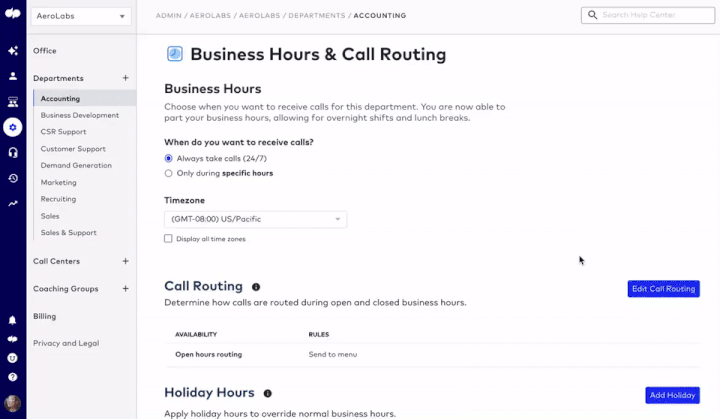
Configure the hold queue by navigating to the “Departments” option under Admin Settings and clicking the “Edit Call Routing” button. (Source: Dialpad)
While 8×8 features ring groups, it’s unclear how many it allows per pricing plan. Dialpad, on the other hand, offers an unlimited number of ring groups in its Enterprise Business Communication package.
The call management features in 8×8’s entry-level plan are limited to basic auto-attendant, voicemail, and music on hold. Dialpad, on the other hand, offers a range of call management capabilities in its base-level package, namely the multi-level auto-attendant, visual voicemail, call forwarding, call flip, call recording, and call activity.
Best for Hardware: 8×8
|
|
8×8 wins the hardware round thanks to its wide variety of VoIP devices and flexible payment plans. 8×8 and Dialpad feature adapters, desk phones, and headsets in their catalogs, but 8×8 takes its hardware offerings up a notch by offering conference and cordless phones.
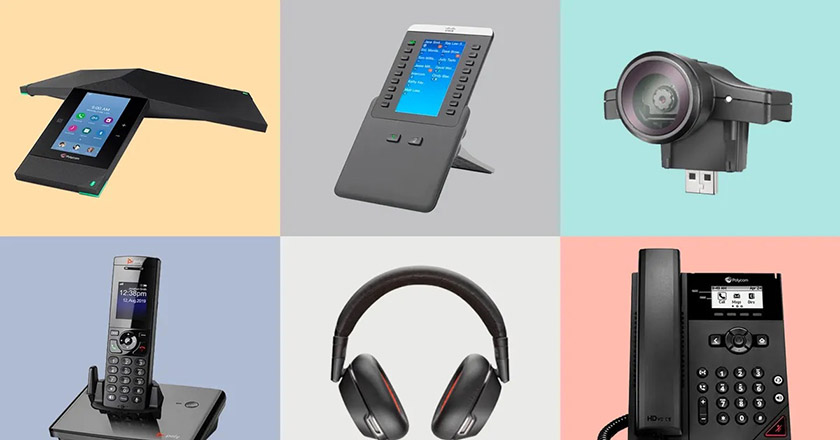
8×8 offers a variety of VoIP phones and accessories. (Source: 8×8)
Moreover, 8×8 helps users acquire assets through different payment plans. One of the options is the one-time payment, allowing businesses to own devices immediately after purchase. This comes with a 90-day warranty.
The 8×8 Extended Payment Plan option lets you pay in installments for up to 60 months. This carries a one-year warranty. The last option is the Flex Program, which is a device-as-a-service arrangement, giving you the benefit of low monthly payments, a seven-year warranty, and anytime cancellation.
Best for International Calling: 8×8
|
|
When comparing Dialpad vs 8×8’s international calling capabilities, 8×8 has the upper hand, as it allows businesses to place unlimited calls to 48 countries, including France, Germany, Russia, Switzerland, and the United Kingdom. This is the reason the provider was our top pick in the list of the best services for VoIP international calls. With Dialpad, you pay for overseas calls per minute. However, if you’re connecting to a Dialpad user, the call is free of charge.
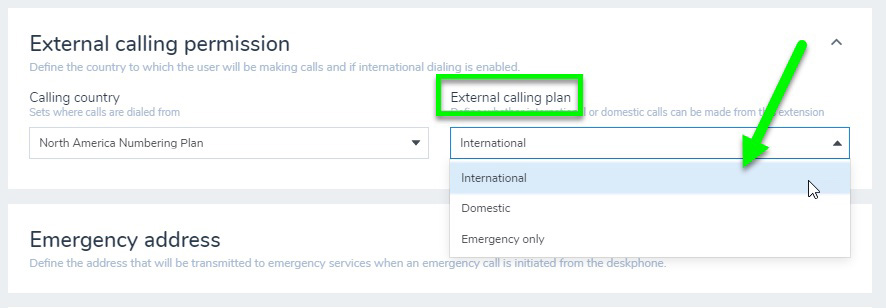
To activate international calling, managers must go to the “External calling permission” available in the 8×8 Admin Console. (Source: 8×8)
With 8×8’s PSTN replacement services in over 50 countries, allow your workforce overseas to place high-quality calls as if they are connected through a traditional local landline. Team members from regional offices will have a local caller ID and access to emergency numbers and, at the same time, dial numbers without the additional prefixes.
8×8 has a massive global number coverage, offering local phone numbers in over 100 countries. This is broader than Dialpad’s offering, which only includes 20-plus territories.
Best for UCaaS Features: 8×8
|
|
Dialpad and 8×8 boast great UC capabilities, but 8×8 emerges superior in this category because of how robust the collaboration tools are. Its biggest advantage over Dialpad is its large meeting participant capacity. The provider allows businesses to host up to 500 audio and video conferencing participants. Dialpad only accommodates a maximum of 10 attendees.
8×8 also provides a range of collaboration tools in video conferences. Aside from the typical in-meeting chat, screen sharing, and hand-raising, you’re able to create polls and breakout rooms. Brainstorm and organize ideas through the virtual whiteboard and livestream meetings to YouTube. On top of these, the provider allows businesses to customize meeting environments by adding their brand logo and colors and creating a vanity meeting link.
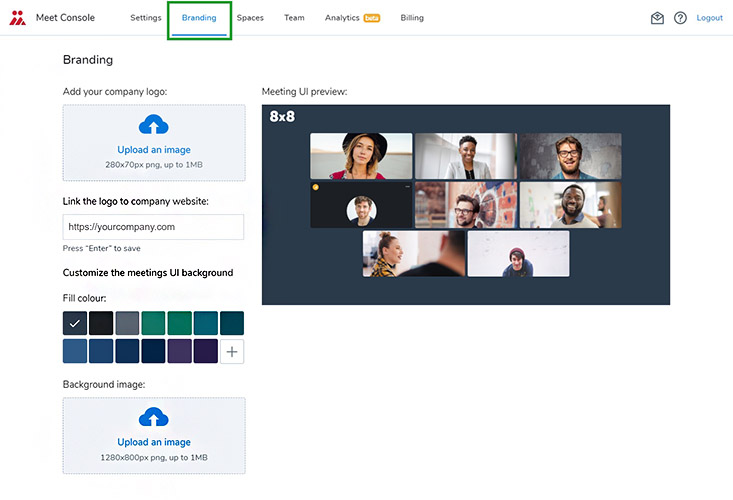
8×8 allows users to customize the meeting room with their brand colors and company logo. (Source: 8×8)
In terms of team messaging, both Dialpad and 8×8 support one-on-one and group chats, emoji reactions, and file sharing. 8×8 allows users to reply directly from the notification banner of their smartphone, making sending messages instant and convenient.
Best for Integrations: Dialpad
|
|
In comparing 8×8 vs Dialpad integrations, we found that Dialpad outmatches 8×8 in the number of third-party apps, offering 62 tools, whereas 8×8 only has 43. The table above shows the platforms unique to each provider.
The apps they share include customer relationship management (CRM) systems, such as HubSpot, Salesforce, Zoho CRM, ServiceNow, Zendesk, and Microsoft Dynamics 365. Both platforms integrate with popular messaging apps like Microsoft Teams and Slack, and productivity tools, namely Google Workspace and Office 365. Dialpad and 8×8 work with sign-on solutions as well, like Azure and Okta.
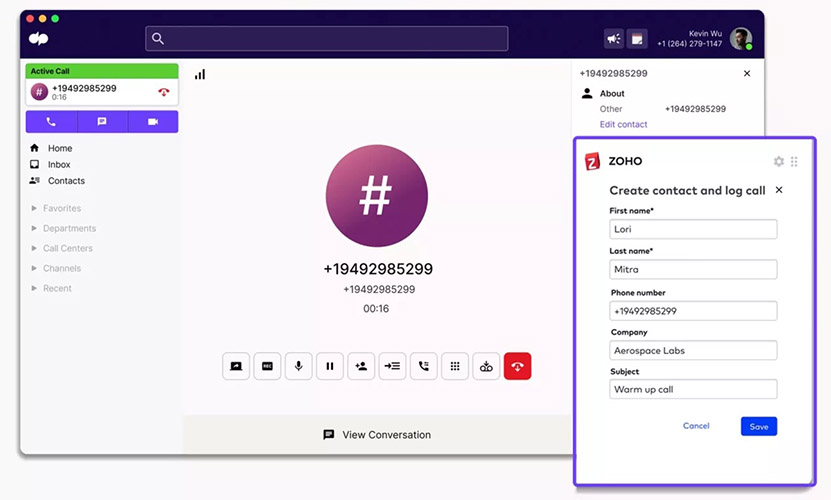
Dialpad integrates with Zoho CRM. (Source: Dialpad)
Compared to 8×8, Dialpad integrates with more niche apps. These include legal software Clio and LawGro and customer service platforms Helpwise and Front. Its integration with workflow automation tools like Zapier, Integrately, Tray.io, and Make helps extend and improve the business phone system’s functionality. On Zapier alone, you’re able to integrate Dialpad with 5,000 other apps.
Best for Customer Support: Dialpad
|
|
In terms of customer support, Dialpad again wins as the provider offers more direct customer communication channels than 8×8. While 8×8 also provides assistance over the phone, live chat, and its ticketing platform, Dialpad takes customer service up a notch by offering a dedicated account manager and support number for businesses that choose the Enterprise plan.
On top of these, subscribers get priority routing and a 100% uptime guarantee in their service level agreement. Regardless of the package you choose, you have the option to contact the provider for professional installation services.
Frequently Asked Questions (FAQs)
Is the 8×8 Work app free?
No, the UC app is a feature offered in 8×8’s paid subscription plans. However, it’s possible to use it at no cost when you sign up for the Express subscription’s 30-day free trial. Revisit the provider’s subscription plans in this 8×8 review.
Does Dialpad record all calls?
Yes, users are able to record a conversation during a live call on Dialpad. From the call controls, select the record button to activate the recording. To make call recording automatic for main lines and departments, admins must tick off the automatic call recording box provided in the Advanced Settings. Read our Dialpad review to learn more about what you can do with this platform.
Which phones does 8×8 use?
8×8 works with select Poly, Yealink, Cisco, and Panasonic devices. On this page, you’ll find the complete list of compatible phones. Provide the best units for your team by checking our top picks for VoIP phones.
How We Evaluated Dialpad vs 8×8
To provide structure to our Dialpad versus 8×8 comparison, we examined critical factors businesses consider when choosing among the best business phone systems. These include the pricing, VoIP and unified communications as a service (UCaaS) capabilities (how they’re used for different business needs), ease of use, and popularity.
Here’s a complete breakdown of those factors:
Pricing: To determine if the providers offer accessible pricing points, we looked at the cost of the entry-level subscription plans and the availability of discounts for annual billing. We also checked how long the free trials last.
General features: For general features, we took into account the business phone and call management features each provider offers, including the availability of auto-attendants, ring groups and voicemail, and the range of virtual phone numbers. Plus, we considered if the platforms provide access via desktop and mobile apps.
UC features: The UC features we included in our evaluation are primarily the team chat and video conferencing capabilities. We considered how robust the collaboration features are, including the duration of video meetings and the maximum number of participants allowed for each session.
Expert score: This includes our overall expert opinion on the providers’ standout features, ease of use, and value for money. We also determined the platform’s level of popularity among business circles.
Bottom Line
This comparison review went back and forth between Dialpad and 8×8, but in the end, 8×8 reigned superior. Given its $15 entry-level plan, annual billing discounts, and flexible payment options for VoIP hardware, the platform is an excellent option for businesses looking for a VoIP platform that won’t break the bank.
8×8 is a great choice for companies that need to maintain an international presence and connect globally scattered teams, as it offers unlimited calls to 40-plus countries and robust video conferencing features. However, if your priority is excellent call management, extensive integrations, and multi-channel customer support, Dialpad is the better option.